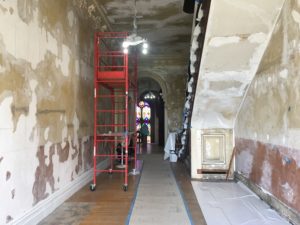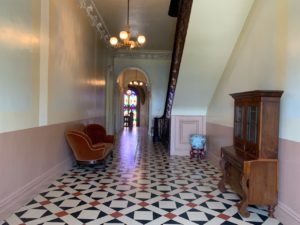History
Hay House was gifted to The Georgia Trust for Historic Preservation in 1977 by the Parks Lee Hay Foundation. Prior to the Trusts acquisition of the building, the Johnston-Felton-Hay House had received over a century of modifications by three different families. The house also suffered from a lack of maintenance on its exterior and interior spaces, all of which needed stabilization.
A primary mission of the Georgia Trust was to thoroughly investigate, research and restore damaged structures/spaces using the highest standards in restoration. In order to do so, a historic structures report on the house and grounds was developed as well as a preservation master plan to guide all future restoration projects at Hay House.

Preservation Philosophy
Two main objectives were established for restoring Hay House: first, provide a broad interpretation of the site’s social history and architectural evolution. Second, use the highest standards in restoration and the best craftsman available to conduct the work.
In addition, all restoration/preservation projects are approached in a curatorial manner. Once a space has been selected to restore, a thorough study of the space, paint, and lighting fixtures is conducted. Any changes made to a room during the restoration are reversible so the period interpretation of a space may be changed years later or upon additional discoveries.

Interpretation
Unlike many house museums, rooms at Hay House have been restored and interpret different periods in Hay House’s history. This practice was adopted early in the museum’s operation in effort to represent/interpret all periods of occupancy by the Johnston, Felton and Hay families. For example, The Dining Room, Green Parlor and Marble Hall have all been restored to their Johnston-Felton period appearance, whereas other rooms including the Double Parlor and Music Room reflect the Hay Family era. By adopting this interpretive approach, Hay House is able to interpret the architectural evolution of the building from 1859-1962.

